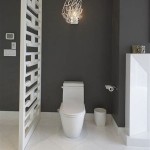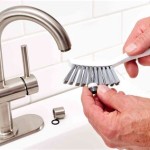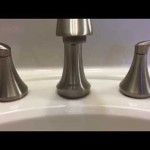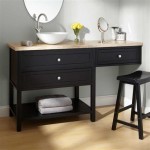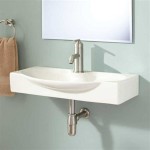How To Remove Mold On Bathroom Walls
Mold growth in bathrooms is a common household problem, primarily due to the consistently high humidity levels and poor ventilation that often characterize these spaces. The presence of mold not only presents an aesthetic issue but can also pose potential health risks, particularly for individuals with allergies, asthma, or compromised immune systems. Therefore, timely and effective mold removal is crucial to maintain a healthy and safe living environment. This article provides a comprehensive guide on how to identify, prepare for, and remove mold from bathroom walls, ensuring a clean and healthy bathroom space.
Before embarking on the mold removal process, it is essential to understand the type of mold you are dealing with. While some molds are harmless, others can be toxic. Visual identification can sometimes provide clues, but laboratory testing is recommended for a definitive assessment. Mold typically appears as dark spots or patches, exhibiting colors such as black, green, brown, or white. It may have a musty or earthy odor. Common types found in bathrooms include Cladosporium, Aspergillus, and Penicillium. In severe cases, Stachybotrys chartarum, also known as black mold, may be present. If you suspect black mold, it is advisable to consult with a professional mold remediation service due to its potential health hazards.
Once you have identified mold growth, preparation is key to a safe and effective removal process. This involves gathering the necessary cleaning supplies, ensuring adequate ventilation, and protecting yourself from mold exposure. The following steps outline the preparation procedures.
Firstly, gather the required cleaning supplies. These include: * A spray bottle * A stiff-bristled brush * Cleaning solutions (bleach, vinegar, borax, or commercial mold removers) * Protective gear (gloves, mask, eye protection) * Clean cloths or sponges * A bucket of water
Secondly, ensure adequate ventilation. Open windows and doors to create airflow and circulate fresh air throughout the bathroom. If possible, use a fan to further enhance ventilation. Proper ventilation helps to minimize the spread of mold spores and dissipate strong chemical odors associated with cleaning solutions.
Thirdly, protect yourself from mold exposure. Mold spores can be harmful if inhaled or come into contact with skin or eyes. Wear a mask (N-95 or higher rating) to filter out mold spores, gloves to protect your hands, and eye protection (goggles or safety glasses) to prevent irritation. Consider wearing old clothing that can be easily washed or discarded after the cleaning process.
With preparation complete, the mold removal process can begin. There are several cleaning solutions that can be used to effectively remove mold from bathroom walls. The choice of solution often depends on the severity of the mold growth and personal preferences. Here are some common and effective options:
Bleach Solution
A bleach solution is a potent and widely used method for killing mold. It is particularly effective against surface mold and staining. To prepare a bleach solution, mix one part bleach with ten parts water in a spray bottle. Spray the solution onto the affected areas of the bathroom walls, ensuring thorough coverage. Allow the solution to sit for approximately 10-15 minutes to allow the bleach to penetrate and kill the mold. Use a stiff-bristled brush to scrub the mold from the wall surface. Rinse the treated areas with clean water and dry thoroughly with a clean cloth. It is crucial to exercise caution when using bleach, as it can discolor surfaces and produce harmful fumes. Always ensure proper ventilation and avoid mixing bleach with other cleaning agents, especially ammonia, as this can create toxic gases.
The effectiveness of bleach stems from its ability to disrupt the cellular structure of mold, effectively killing it. Remember that bleach primarily addresses the surface mold and may not penetrate porous materials to eliminate the mold's roots. In such cases, repeated applications or alternative cleaning solutions may be necessary. Furthermore, it is important to note that bleach can be corrosive to certain materials, such as grout, so test the solution in an inconspicuous area before applying it to the entire surface.
Vinegar Solution
Vinegar, specifically white distilled vinegar, is a natural and less harsh alternative to bleach. It possesses antifungal and antibacterial properties that make it effective at killing mold and preventing its regrowth. Pour undiluted white distilled vinegar into a spray bottle. Spray the vinegar directly onto the moldy areas, ensuring complete coverage. Allow the vinegar to sit for at least one hour to allow it to penetrate the mold. After one hour, wipe the treated areas with a clean, damp cloth. If necessary, scrub the areas with a stiff-bristled brush to remove stubborn mold stains. Vinegar is generally safe for use on most surfaces and does not produce harmful fumes, making it a more environmentally friendly option.
Vinegar's effectiveness lies in its acidic nature, which disrupts the mold's cellular structure and inhibits its growth. While vinegar may not be as potent as bleach for removing heavy mold infestations, it is a safer and more sustainable option for routine maintenance and preventing mold recurrence. The distinct odor of vinegar will dissipate over time, leaving a cleaner and healthier bathroom environment. Regular application of vinegar to moisture-prone areas can help to prevent future mold growth.
Borax Solution
Borax, also known as sodium borate, is a natural mineral with effective cleaning and mold-killing properties. It is less harsh than bleach and safer to use than many commercial mold removers. To prepare a borax solution, mix one cup of borax with one gallon of hot water in a bucket. Stir the solution until the borax is completely dissolved. Transfer the solution to a spray bottle or apply it directly to the moldy areas with a sponge or cloth. Allow the solution to sit for several hours or overnight to maximize its effectiveness. Scrub the treated areas with a stiff-bristled brush to remove the mold. Wipe away any excess solution with a clean, damp cloth. Borax leaves a residue that inhibits future mold growth.
Borax acts as a natural fungicide and disinfectant, killing mold and preventing its return. It is particularly effective on porous surfaces, such as grout and drywall, as it penetrates deep into the material to eliminate the mold's roots. Borax is also relatively odorless and non-toxic, making it a safe and effective option for mold removal in bathrooms. Regular use of borax solution can help to maintain a mold-free environment and prevent future infestations.
Commercial Mold Removers
Numerous commercial mold removers are available on the market. These products are specifically formulated to kill and remove mold from various surfaces. When using commercial mold removers, it is essential to carefully read and follow the manufacturer's instructions. Most commercial mold removers are applied by spraying the solution onto the affected areas, allowing it to sit for a specified period, and then wiping away the residue with a clean cloth. Always wear protective gear, such as gloves, a mask, and eye protection, when using commercial mold removers, as they may contain harsh chemicals. Ensure adequate ventilation during the application and cleanup process.
The effectiveness of commercial mold removers varies depending on the specific product and the severity of the mold infestation. Some products are designed for light mold stains, while others are formulated for more extensive mold growth. When selecting a commercial mold remover, consider the type of surface you are cleaning and the specific type of mold you are dealing with. Choose a product that is specifically designed for bathroom mold removal and is safe for use on the materials in your bathroom. Additionally, consider the environmental impact of the product and opt for eco-friendly options whenever possible.
After removing the mold and thoroughly cleaning the bathroom walls, proper drying is crucial to prevent mold from returning. Use a clean, dry cloth or towel to wipe down all treated surfaces. Ensure that all areas are completely dry, paying particular attention to corners, crevices, and areas around fixtures. If necessary, use a fan or dehumidifier to expedite the drying process. Maintaining low humidity levels in the bathroom is essential for preventing future mold growth. Consider installing or upgrading the bathroom exhaust fan to ensure adequate ventilation. Always run the exhaust fan during and after showers or baths to remove excess moisture from the air.
Addressing the Root Cause
Mold recurrence is directly linked to persistent moisture issues. It is imperative to address the underlying sources of moisture to prevent mold from returning. Check for leaky pipes, dripping faucets, and condensation buildup on walls and windows. Repair any leaks promptly and ensure proper insulation to minimize condensation. Consider resealing grout and caulking around bathtubs and showers to prevent water from seeping into walls. Encourage proper ventilation by opening windows and doors whenever possible, particularly after showering or bathing. Regular cleaning and maintenance can also help to prevent mold growth. Wipe down wet surfaces regularly and use a dehumidifier to maintain low humidity levels in the bathroom.
Beyond the immediate removal of mold, long-term prevention strategies are crucial for maintaining a healthy bathroom environment. Conduct regular inspections of the bathroom walls, ceiling, and floors for any signs of mold growth or water damage. Address any issues promptly to prevent them from escalating. Consider using mold-resistant paint on bathroom walls to create a barrier against moisture and mold growth. Ensure that all bathroom fixtures are properly sealed and maintained to prevent leaks. Educate household members about the importance of ventilation and moisture control to promote a mold-free environment.
Dealing with Porous Materials
Mold growth on porous materials like drywall, wood, or fabric presents a unique challenge. Because mold can penetrate deep into these materials, surface cleaning alone may not be sufficient. In some cases, removal and replacement of the affected materials may be necessary. For minor mold infestations on porous materials, try using a borax solution or a commercial mold remover specifically designed for porous surfaces. Apply the solution thoroughly and allow it to penetrate deep into the material. Scrub the area with a stiff-bristled brush and wipe away any excess solution. Monitor the treated area for any signs of mold regrowth. If the mold persists, consider consulting with a professional mold remediation service.
In cases of extensive mold growth on porous materials, it is often more cost-effective and safer to remove and replace the affected areas. This is particularly true for drywall, which can be easily damaged by mold. Cut out the moldy section of drywall, ensuring to remove any surrounding areas that may be contaminated. Dispose of the contaminated drywall properly and replace it with new drywall. Seal the seams and paint the new drywall with mold-resistant paint. Taking these preventative measures will help to ensure that the mold does not return.

How To Get Rid Of Mold On Bathroom Walls Family Handyman

How To Remove Mold From Walls True Value

How To Get Rid Of Mold In The Shower On Bathroom Walls Clorox

How Do You Get Rid Of Mould On Bathroom Walls Igloo Surfaces

How To Get Rid Of Mold In Bathroom 2024 Tips From Puroclean

Bathroom Ceiling Mold Removal When To Clean Call Branch Environmental

How To Remove Mold From Bathroom Walls 6 Cleaning Tips

The Ultimate Guide On How To Clean And Get Rid Of Mold Pro Housekeepers

A Handful Of Ways To Remove Mold On Bathroom Walls Clean Water Partners

How To Clean Black Spots In The Bathroom Family Handyman
Related Posts
